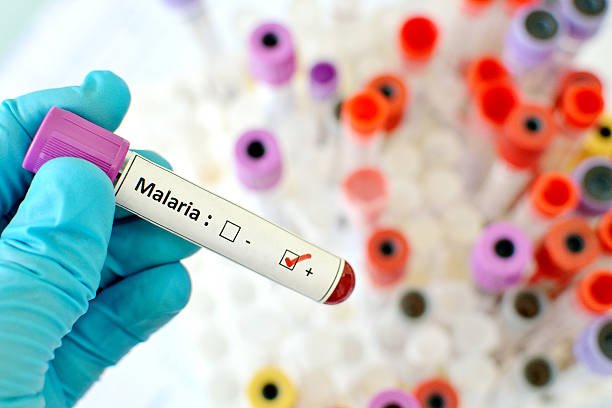Malaria, a life-threatening disease caused by the Plasmodium parasite, has plagued mankind for centuries. It is a major global health issue, particularly prevalent in tropical and subtropical regions, affecting millions of people each year. This article provides an overview of the causes, symptoms, and treatment options for malaria. By understanding the intricacies of this disease, its transmission, and the available prevention and control measures, we can work towards reducing its impact on individuals, communities, and global health. Additionally, we will explore ongoing research and future directions in malaria treatment, aiming to ultimately eradicate this highly debilitating illness.
What is Malaria?
Malaria is like that annoying relative who visits uninvited and overstays their welcome. Only, instead of tracking mud through your house, it brings fever, chills, and a general feeling of misery. Malaria is a mosquito-borne disease caused by a parasite called Plasmodium. It’s a major health problem in many tropical and subtropical regions, affecting millions of people every year. So yeah, it’s kind of a big deal.
Historical Context of Malaria
Malaria has been around longer than a rerun of Friends on TV. In fact, it’s been haunting humanity for thousands of years. Ancient texts from Egypt, China, and India mention it, and even the great Greek physician Hippocrates had a go at describing its symptoms. Throughout history, malaria has wreaked havoc on armies, explorers, and civilizations. It’s like the ultimate party crasher, but instead of emptying your fridge, it leaves a trail of fever and suffering in its wake.
The Malaria Parasite: Plasmodium
Let’s talk about our unwanted guest: the malaria parasite, also known as Plasmodium. It’s like that toxic friend who ruins every gathering. Plasmodium has several species, but the most common ones causing trouble are Plasmodium falciparum, Plasmodium vivax, Plasmodium malariae, and Plasmodium ovale. These parasites have a thing for human blood and are transmitted through the bite of infected female Anopheles mosquitoes. So basically, it’s the vampire of the parasite world, but with way worse fashion sense.
Modes of Malaria Transmission
Now, let’s talk about how this whole transmission thing works. When a mosquito with a taste for human blood bites an infected person, it sucks up the parasites along with its snack. These parasites then breed in the mosquito’s gut, multiplying like a bad case of gossip at a high school reunion. When the mosquito bites another person, it injects the parasites into their bloodstream, spreading the malaria infection. It’s like the mosquitoes are playing a twisted game of “pass the parcel,” but instead of winning a prize, you get a fever.
Factors Affecting Malaria Distribution
Malaria is a picky disease when it comes to location. It loves warm climates, where mosquitoes can thrive like they’re on a tropical vacation. Factors like temperature, rainfall, and the presence of suitable mosquito breeding sites influence its distribution. That’s why you won’t find malaria throwing parties in Antarctica or Greenland anytime soon. Sorry, malaria, your invite got lost in the mail.
Early Symptoms of Malaria
So, how do you know if you’ve been bitten by the malaria bug? Well, the party usually starts with a fever, accompanied by chills, sweating, headache, and muscle aches. It’s like having the flu, but with a mosquito as the culprit. These symptoms may come and go in cycles, as if malaria thinks it’s a rollercoaster ride at Six Flags. If you’ve been to a malaria-prone area and start feeling like you’re on a never-ending theme park adventure, it’s time to get checked out.
Complications and Severe Symptoms
If malaria decides to throw an after-party, things can get serious. In some cases, the infection can progress and cause complications. It can attack vital organs like the brain, liver, or kidneys, leaving you feeling worse than attending a Justin Bieber concert (no offense, Beliebers). Severe symptoms can include jaundice, difficulty breathing, confusion, seizures, and even coma. So yeah, it’s not the kind of party you want to stick around for.
Microscopic Examination of Smears
To properly crash the malaria party, doctors need to identify those pesky parasites. One way they do this is by taking a blood sample and examining it under a microscope. It’s like a microscopic version of Where’s Waldo, except you’re looking for the Plasmodium parasites instead. It may take a bit of time and expertise, but hey, finding Waldo was never easy either.
4.2 Rapid Diagnostic Tests (RDTs)
When time is of the essence, doctors may opt for rapid diagnostic tests, or RDTs. These nifty little tools work like pregnancy tests but without the cute baby announcement. You simply apply some blood to the test kit, and if it shows a specific line or a change in color, it’s bad news—malaria crashes your place once again. It’s basically a game of “Is it a line, or is it just my imagination?”
Polymerase Chain Reaction (PCR) Testing
For those stubborn cases where the parasites are playing hide-and-seek with the other tests, doctors may resort to the big guns: polymerase chain reaction (PCR) testing. PCR is like a detective investigation for your blood, using molecular techniques to detect and amplify the parasite’s DNA. It’s like CSI: Malaria Edition. This method is usually more sensitive and specific, ensuring those sneaky parasites won’t get away with their mischief.
So there you have it, a crash course in malaria. Remember, prevention is key, so grab your mosquito repellent, stay away from those buzzing party crashers, and keep yourself safe. Party responsibly, folks!5. Treatment Options for Malaria
When it comes to treating malaria, we have a few tricks up our sleeves. And by “tricks,” I mean medication. Antimalarial medications, to be exact. These drugs are specifically designed to target the parasite that causes malaria and help get rid of those pesky little buggers.
Antimalarial Medications
Antimalarial medications are the superheroes of the malaria world. They come in different forms, including pills and injections, and work by killing the malaria parasites in your body. Some common antimalarial drugs include chloroquine, artemisinin-based combination therapies (ACTs), and mefloquine.
The unsung hero of this battle is medication that prevents malaria. The optimal options for intravenous administration are quinine or artesunate. Let your doctor and you have a conversation about this. Salvavidas Pharmaceutical Pvt Ltd., an Indian company, has developed two injectable formulations of artesunate. Two vials of artesunate injection are provided; one vial contains artesunate injection 120mg dosage of and the other artesunate injection 60 mg. India is the exporter of both vials. It manages distribution and exports as well.
Drug Resistance and Challenges in Treatment
Just like how some people become immune to cheesy pick-up lines, malaria parasites can develop resistance to certain antimalarial drugs. This is a big problem because it makes treating malaria a bit like playing Whac-A-Mole. As soon as we find a drug that works, the parasites find a way to outsmart it. It’s like they went to the same school as James Bond villains.
Management of Complicated Malaria Cases
In some cases, malaria can become as complicated as trying to assemble IKEA furniture without the instructions. These complicated cases may involve severe symptoms or complications affecting vital organs. In such situations, hospitalization and specialized care are often required. It’s a bit like calling in the A-team to deal with the situation.
Prevention and Control Measures against Malaria
Prevention is always better than cure, especially when it comes to malaria. We have a few tricks up our sleeves (again, not the cheesy pick-up lines) to help prevent and control the spread of malaria.
Insecticide-Treated Bed Nets
Forget about fancy mosquito nets that make you feel like you’re sleeping in a fortress. Insecticide-treated bed nets are the real deal. These bad boys are treated with insecticides that kill or repel mosquitoes. Just think of them as the ultimate mosquito repellent force field that keeps those blood-sucking fiends at bay while you catch some Z’s.
Indoor Residual Spraying
Indoor Residual Spraying (IRS) is like a SWAT team raid on mosquitoes. Instead of using flashy tactics, they spray insecticides on the walls and ceilings of houses to kill any mosquitoes that come into contact with the treated surfaces. It’s like a ninja ambush, but for mosquitoes.
Chemoprevention Strategies
Chemoprevention is a fancy way of saying “taking medication to prevent malaria.” This strategy is often used in areas with high malaria transmission, where people are given antimalarial drugs to prevent them from getting infected. It’s like taking a preemptive strike against malaria, which I must say, is pretty clever.
The Impact of Malaria on Global Health
Let’s talk numbers. Malaria is like that annoying neighbor who never leaves you alone. According to the World Health Organization (WHO), there were an estimated 229 million cases of malaria in 2019, resulting in approximately 409,000 deaths. That’s a lot of people feeling under the weather and unfortunately, feeling six feet under.
Malaria Burden Worldwide
Malaria is no respecter of borders or fancy titles. It affects people all over the world, particularly in sub-Saharan Africa. In fact, Africa carries the heaviest burden of malaria cases and deaths. It’s like Africa is playing host to the world’s most unwanted houseguest.
Socioeconomic Consequences of Malaria
Malaria doesn’t just make people sick; it also likes to mess with the economy. The disease takes a toll on productivity, as people who are infected can’t work or go to school. It’s like malaria has a subscription to Netflix and spends all day binge-watching instead of being productive. This loss of productivity costs billions of dollars each year, which could otherwise be spent on more exciting things, like roller coasters or chocolate.
Research and Future Directions in Malaria Treatment
The battle against malaria is far from over. Researchers are working tirelessly to find new and improved ways to prevent and treat malaria.





